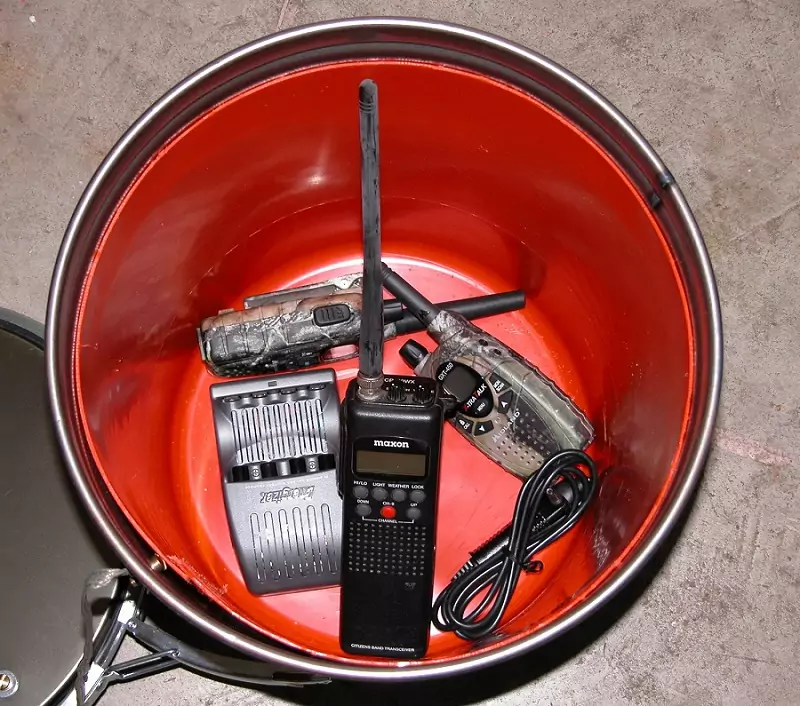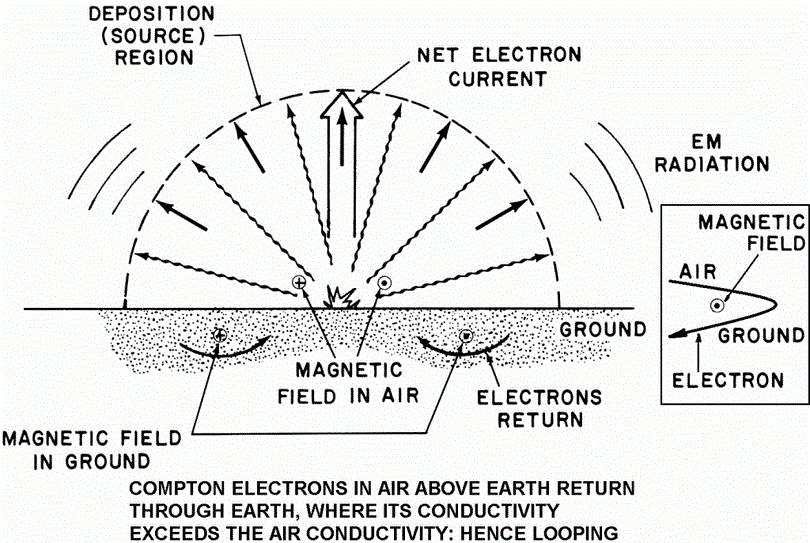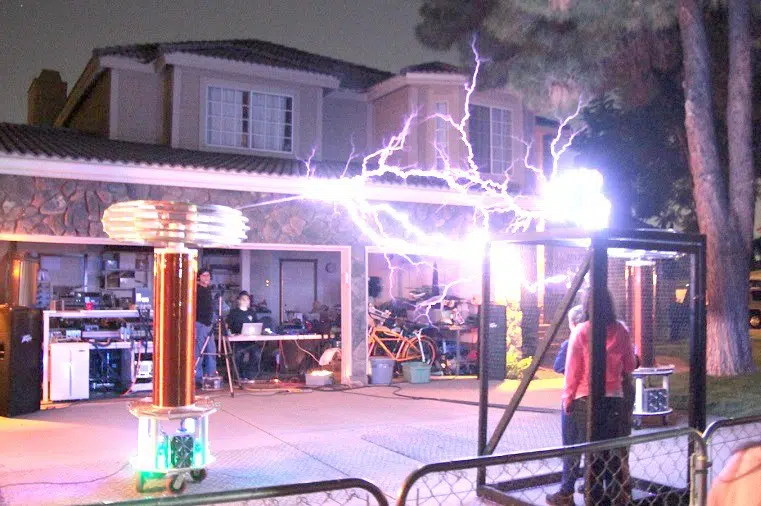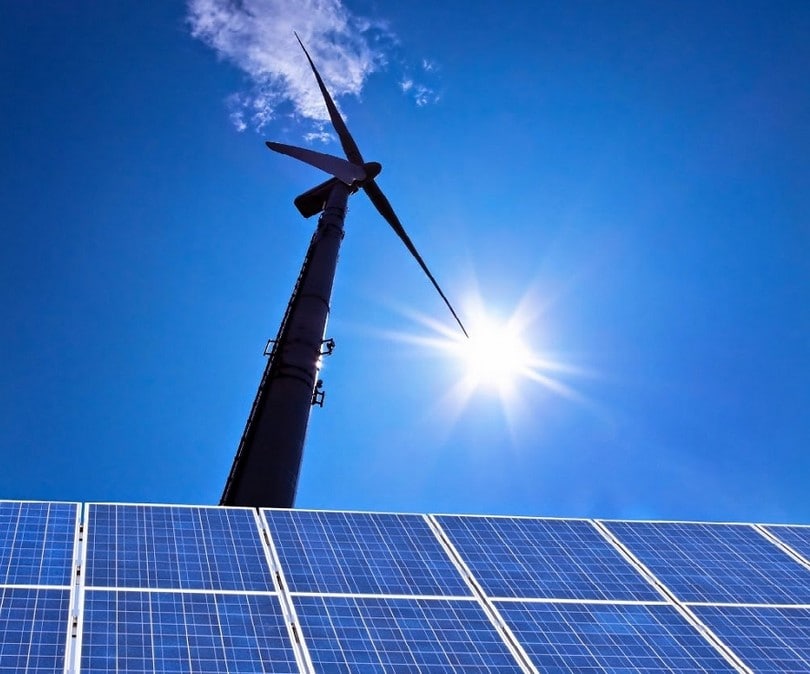Figuring out how to protect against EMP, or electromagnetic pulses, is something that everyone should consider. In this day and age, people have gotten too used to depending on technological devices. Few people leave the house without bringing their mobile phone. They rely on it for constant communication, access to work email, and to get answers to questions. People use GPS devices to find their destinations.
[the_ad_placement id=”in-text-1-type-r”]They have also come to depend on the various electronic features of their vehicles, such as power steering and cruise control. People read on tablets and work on laptops. Even some toddlers and young children have gotten used to playing games on an iPad or swiping through pictures on a phone. It truly is an electronic world out there.
The problem with this dependence is that too many people simply assume that their devices, the internet and the electric grid are always going to be there when they need them. The truth of the matter, however, is that is assumption is flawed.

A simple example involves those instances when large storms have rolled into cities, generating floods and cutting the power. Even just this loss of electricity is usually enough to seriously disrupt people’s lives. Food in refrigerators gets spoiled, and after enough days without power, large groups begin to suffer from lack of access to food.
Phones and other devices are rendered useless after the batteries run down, so that communication across distances becomes nearly impossible for many. To think that this is just an example where only the power has gone out. The situation becomes even more problematic in the event of an EMP.
What is an EMP?
In order to know how to protect from an EMP, it is first vital to understand its root causes, and know what the potential consequences may be. That starts by understanding what an EMP is and what potentially hazardous or dangerous effects it might have.
An EMP is usually described as a short burst of electromagnetic energy, which travels along many frequencies. It is possible for an EMP to be created in nature, with no input from humans. At the same time, some of the most potentially destructive forms of EMPs are brought about by humans, through the use of nuclear weapons.
As far as naturally occurring EMPs go, one of the most worrying possibilities is an EMP derived from a solar flare. What happens is that the sun suddenly ejects a huge amount energy away from itself in the form of a cloud of protons and electrons. If this cloud were to make contact with the Earth, there would be a huge mass of electrons entering and moving quickly through the atmosphere, causing serious damage to electronic devices. Something like this almost happened in 2012.
Thankfully, the solar flare missed the Earth then, though not by much. Prior to that, a huge solar flare did hit the planet in 1859, causing massive damage to the telegraph network then in use. Something similar could very well happen again, making it important to know how to survive an EMP.

The most disconcerting type of EMP which can be created by humans is the NEMP or the nuclear electromagnetic pulse. While conducting a nuclear test in the Pacific Ocean back in the 1960’s, researchers were surprised to note than an EMP had been generated which was powerful enough to cause havoc with electricity, the telephone system and radios in Hawaii. At that time, the nuclear explosion had occurred more than 200 miles above the surface.
Today, the concern is that a nuclear device could be detonated in much the same way. The barrier to doing this would not be as high because this does not require much precision. As long as the nuclear device detonates high above its target area, the resulting EMP would already be enough to cause widespread damage and more. We have an entire article on how to survive a nuclear attack, if you want to know more.
The problem is that the current state of infrastructure has not been hardened nor given the electromagnetic protection needed to withstand a powerful enough EMP, whether natural or created by humans. The United States government has previously studied the potential effects of such a pulse.
In fact, a Commission to Assess the Threat to the United States from Electromagnetic Pulse Attack was created, and in 2008, it released its findings. The Commission found that a high altitude detonation of a nuclear device could have catastrophic effects on American electric infrastructure, resulting in large loss of life especially in dense cities as well as the suburbs. Clearly, the threat is real and people must do what they can to prepare.
Protection using a Faraday cage
One of the first lines of defense against an EMP, which is usually mentioned, is a Faraday cage. This type of enclosure was created by Michael Faraday as far back as 1836. It can be imagined as a kind of box which is created from material that can conduct electricity.
The material is usually some form of conductive metal which needs to be of sufficient thickness, and which either has no holes or very small holes. If an electrical device is placed inside a Faraday cage and is struck by electromagnetic energy, the cage will channel the energy throughout and around the cage’s material, so that none of the energy affects the device inside.
[the_ad_placement id=”in-text-2-type-r”]Because of the protection that a Faraday cage provides to its contents, it offers the potential to save devices and items stored within, from an EMP. While it is possible and may be advisable to create a Faraday cage from scratch, there are also existing items which already act as Faraday cages. One example is an elevator which is essentially a metallic cage. This helps to explain why a person making a call on a mobile phone will usually find that call disconnected, once he enters an elevator and the doors close.

The advantage though of creating a Faraday cage from scratch is that you can adapt its size to your particular needs. You can make it large enough to fit your important electrical devices, while ensuring that it is not too large to store in your home or other space. The key is making sure that the material being used can do the job.
One piece of advice involves using the aluminium material that is used to line attics. This material is fairly sturdy and thick. It can then be used to line the insides of boxes, trash cans or other containers. To increase the protection, you can double or triple line the box, as well as use boxes within boxes. If you do not have access to this material, layered aluminium foil can also be tried.
After creating a DIY Faraday cage, an important step is to test it. One way to do so is by putting a mobile phone inside, closing the box, and then trying to call the mobile phone to see if it will connect and ring. If the phone does ring, then that would be evidence that the cage is still too leaky. Another option is to use a radio tuned to a nearby AM station. Keep on adding the aluminium lining or foil, and adjusting the setup of the box until the AM transmission is silenced. Then, try it again with an FM station.
Hardening transportation from an EMP
In the event of an EMP strike, transportation is going to be an important issue. It cannot be assumed that emergency responders are going to be able to go to you, in case of a serious injury, cardiac arrest or other medical emergency. Being able to get from place to place could also allow people to seek new sources of food and clean water, in case existing stores run out.
Transportation is also important in the event that there is a need to move to a safer place. There may be a nearby fire threatening to damage your home. Or there may be armed groups roaming around.
To a certain extent, most vehicles already have some shielding in place, by virtue of the fact that cars and trucks are essentially metal enclosures. This helps to protect car occupants, for instance, in the event of a lightning strike.
However, newer cars are also heavily dependent on electronic systems, and tests have found that exposure to electromagnetic energy still has the potential to seriously compromise a car. One major problem is that experiments have shown that an EMP blast can damage a vehicle’s electronics, cause a car engine to stop, damage the ignition system and cause other malfunctions. However, there are specially designed vehicles equipped with the necessary EMP protection and you can read more about them in our survival vehicles article.
One way to protect a vehicle would be to park it in a Faraday cage large enough to hold it, and shut off the engine. This would, however, require some form of advanced warning. This is possible in the event of a solar flare because long range detection can allow people to have several hours to prepare for its arrival. This kind of advance warning may be less likely, however, in the event of a nuclear EMP. Another thing that people can do is make use of an older vehicle instead of one of the newer ones. Older vehicles from years back did not rely on electronic systems to operate.

So instead of having a newer car in your garage, you would have an older truck. This more or less removes electronic devices from the equation. You can also choose to go with something that uses a diesel engine. This has the benefit of a vehicle which does not make use of an ignition system at all, so there is one less thing to get damaged by an EMP.
Diesel vehicles also have the added advantage of using a combustion engine that is more able to make do with makeshift or rudimentary fuel. If an EMP were to damage the electronics used by gas stations and other fuel depots, a diesel engine can offer additional and useful flexibility.
Reducing dependence on distribution systems
One of the immediate problems that will need to be dealt with, in the event of an EMP attack, is that the distribution and supply systems that many people take for granted will not be working. One example of this previously mentioned above involves the supply of fuel.
Even if you have a vehicle that is working properly after the EMP strikes, it will not be of much use if there is no way to refuel it. An EMP may very well damage electronic pumps used to bring fuel to the surface, as well as the other systems on which gas stations depend. Given enough time, gas stations will run out of fuel, particularly if they are not able to resupply from the main depot.
In this example, it is important to protect yourself by being as independent of these distribution and supply systems as possible. One simple thing to do is to make sure that your vehicles regularly have their fuel tanks full or close to full. Some individuals have taken this a step further, and have modified their diesel trucks so that they can run off of biofuel or some other fuel that they can produce themselves. By doing so, they have the ability to keep their vehicle running, even if gas stations and fuel companies remain crippled. We also have a great article on how to make biofuels that we invite you to read.
It is also important to take a close look at sources of water and food. It is best to build up your own stocks so that even if things become chaotic, and it is not possible to purchase or have access to supermarkets, you will be able to get by. If you usually get water out of a tap, just imagine what your options will be if central pumping stations stop functioning. Consider the possibility of having your own deep well which uses a mechanical system for bringing water to the surface.
You will also need to stockpile enough food in a form which is able to last for a long time, while still providing the necessary amount of nutrition. We have a great article on methods to stockpile on food for emergency situations. Medicines are also important, particularly maintenance medicines which need to be taken regularly to deal with chronic conditions. Pharmacies may no longer be able to function in the event of an EMP, and an EMP will also tend to damage the refrigeration systems that many medicines rely on. So it becomes incumbent upon you to build up your stockpile of important medication, and ensure that these are kept in a suitable location.
Alternative power sources
An EMP can cause catastrophic and long term damage to a nation’s electric grid. In order to protect yourself and your way of life, it is important to do what is possible to ensure that electronic devices survive the EMP. This is where the previously mentioned Faraday cages come in.
However, that is not the only concern. Even if the devices survive, they will need to have a usable and sustainable source of power. This can be done by setting up alternative energy sources in advance. Some systems will be more straightforward than others, and some devices will already offer alternative power built in.

For example, after any national emergency, it is important to be able to stay on top of the news so that you can have access to important, sometimes lifesaving information. An AM, FM or other radio can be very helpful in this regard. For instance, the Eton’s American Red Cross FRX3 is a great radio to have in an emergency situation – more on emergency radios you can find here.
There are certain radios which already come with an integrated solar panel and/or hand crank. This way, even after batteries are no longer readily available, it will still be possible to make use of the radio during the day as well as the night. There are also lighting systems that rely on solar panels connected to batteries. This can be very important in terms of maintaining proper visibility around your property.
[the_ad_placement id=”in-text-3-type-r”]This can be taken a step further, so that individuals, households and small groups can set up their own local energy distribution system. This can derive power from clusters of solar panels, as well as wind power based generators, or water based ones. The prices of solar panels, batteries, controllers and other related devices continue to go down. What was once prohibitively expensive is now fairly affordable. In most cases, it should be possible to start with fewer panels and batteries, and then keep on adding once the budget allows it. You can find out more about alternative energy sources in this article.
Do you really need to protect yourself?
In the end, vigilance is key when it comes to protecting from an EMP. Stay on top of news relating to activity on the sun’s surface, solar storms and solar flares. This is something that can allow you to better prepare for a solar flare that appears to be heading for Earth.
Also stay up to date regarding nuclear threats from various countries, especially countries where the state apparatus is not very strong. This makes it more possible for access to nuclear weapons to fall into the wrong hands. The more aware you are of nuclear geopolitical developments, the more advance warning you can have.
Then, make sure to have an action plan that kicks in, once news of a potential solar flare or nuclear strike arrives. Make sure that all members of the household know what they are supposed to do. Have your Faraday cages ready and easily accessible. Make sure your fuel tanks are full or nearly so.
Practice your response to an EMP regularly, so that you have greater confidence that it will be followed through. In addition, start stockpiling important things such as water, food, medicines and the like. Over time, and with regular accumulation, your stockpile will become more substantial and offer greater peace of mind.






I believe the Faraday cage is the most reliable and it is my first line of defense. Of course, it is best not to depend so much on electricity, but life will be much harder, and most people will not stop depending on power. In any case, I take precautions just like any self-respecting survivalist out there; I have to learn how to build the Faraday cage, back up any and all valuable information, rely less on electronic devices, research a power source that doesn’t depend on electricity.
I recall reading about a solar storm that occurred in 1859; it destroyed light bulbs causing massive fires in multiple homes. The devices that are plugged in but turned off are still vulnerable because the electronic circuit is active. The Pulse travel in milliseconds speed, rendering any safety mechanism absolute.
The study of EMP effect on cars and trucks were done at levels in the 25kv to 30kv lengths, and a few vehicles survived. In any case, any incident that we may face would no doubt be in the 100kv to 200kv lengths.
In the absence of an adequate measure of hard evidence, researchers have attempted to investigate an estimation about the quality and impacts of the distinctive parts of the EMP. There has never been any fair agreement about whose estimates are right. Since there can be no further investigation, there is no real way to test the veracity of the estimations made by different researchers since 1962.
Being shut off from all electronic devices would be tricky. Alternative power sources would be needed, as would skills when it comes to surviving without different devices. I think navigation is key as we could not use GPS devices anymore.
Cooking, being hot and dry will likely be taken care by making a fire, so skills when it comes to maintanning one will be important too.
Thank you Peter for sharing your opinion with us.